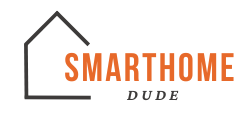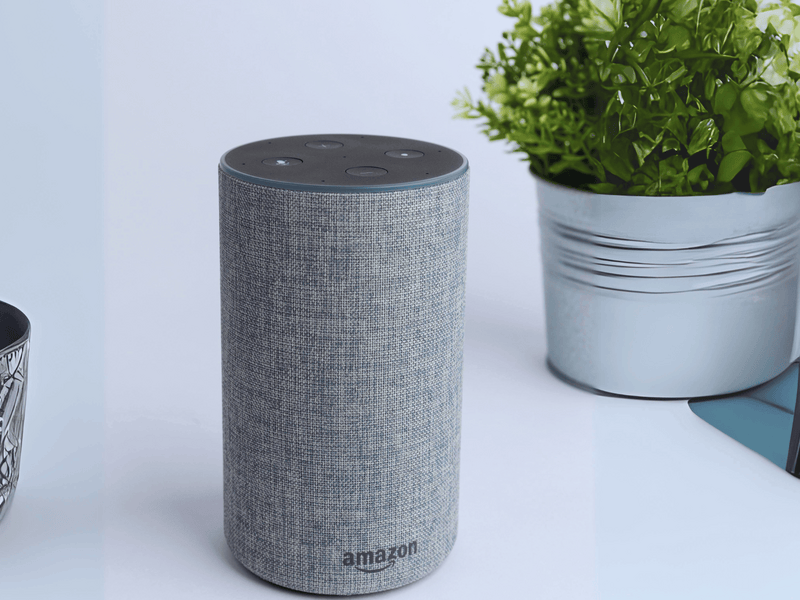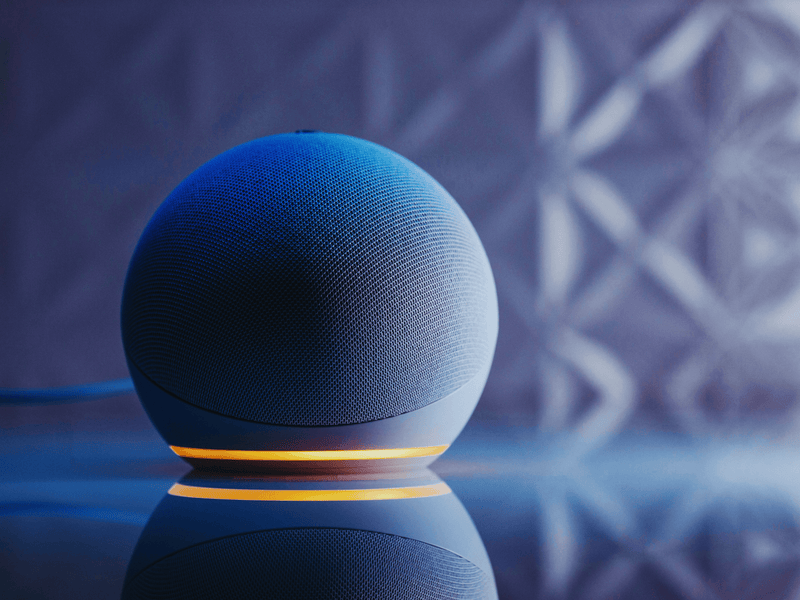As we enter the golden age of automation, technology continues to revolutionize every aspect of our lives. From smartphones to smart TVs, we are surrounded by devices that make our lives easier and more convenient. So, why not bring the wonders of technology into our homes? Welcome to the world of smart homes, where connectivity and automation create a seamless and futuristic living experience. In this comprehensive guide, we will explore the reasons why you should consider turning your home into a smart home and how to get started on this exciting journey.
Table of Contents
- What is a Smart Home?
- The Benefits of Smart Home Technology
- How Does a Smart Home Work?
- Getting Started with Smart Home Technology
- Recommended Smart Home Devices for Beginners
- Smart Home Tips and Best Practices
- The Future of Smart Homes
- Conclusion
What is a Smart Home?
A smart home is an interconnected ecosystem of devices, appliances, and systems within a residential property. These devices are designed to communicate and work together seamlessly, providing homeowners with greater control, convenience, and energy efficiency. Smart home technology allows you to remotely manage and automate various tasks, such as controlling lights, adjusting thermostat settings, monitoring security cameras, and much more. By leveraging internet connectivity and advanced sensors, smart homes offer a level of convenience and efficiency that was once unimaginable.
The Benefits of Smart Home Technology
Comfort and Convenience
One of the primary reasons to embrace smart home technology is the comfort and convenience it offers. With a smart home system in place, you have the power to control and monitor your home appliances and systems from anywhere using your smartphone or other network devices. Imagine being able to turn on the lights, adjust the temperature, and even check the locks with just a few taps on your phone. Smart home systems can also automate routine tasks, such as automatically turning on lights when you unlock the front door. Additionally, intelligent lighting, sound, and temperature adjustments create a warm and inviting atmosphere, making your home a haven of comfort and relaxation.
Energy Efficiency
Smart homes are designed to be energy-efficient, and this translates into significant cost savings on your utility bills. Smart lighting systems use energy-efficient LED bulbs and can be programmed to turn off when no one is in the room or adjust their brightness based on natural lighting conditions. Smart power strips and energy tracking devices help monitor and reduce overall energy consumption. Some smart homes even monitor water usage, helping you conserve water and reduce waste. Studies have shown that smart homes can save up to 30-40% on energy usage compared to non-smart homes, making them not only environmentally friendly but also more cost-effective.
Safety and Security
One of the most compelling reasons to invest in smart home technology is the enhanced safety and security it provides. Smart home security devices, such as surveillance cameras, automated door locks, and motion detectors, offer peace of mind by ensuring maximum protection for you and your loved ones. These devices can be controlled remotely, allowing you to monitor your home in real-time, even when you’re away. Motion sensor lighting ensures safe navigation through hallways at night, while gas leak detectors automatically shut off the gas supply in case of a dangerous concentration of gas. With a smart home security system, you can sleep soundly knowing that your home is protected.
Flexibility and Customization
Smart home systems are highly flexible and can adapt to your changing needs and preferences. As technology continues to evolve, you can easily upgrade your appliances and devices without disrupting the entire system. Smart home automation allows for customization according to your lifestyle and preferences. You can adjust the brightness of lights, automate curtain movements, and schedule routine tasks to be executed automatically. With a smart home, you have the freedom to tailor your automation technologies to match your unique requirements and create a living space that truly reflects your personality.
Home Management Insights
Smart home technology not only enhances your living space but also provides valuable insights into your daily habits and activities. By monitoring your smart devices, you can gain a deeper understanding of how you use energy, store food in your refrigerator, cook meals, and utilize electrical appliances. These insights can help you make informed decisions and adopt healthier and more purposeful lifestyles. For example, you can analyze your TV-watching habits, optimize your food storage, and fine-tune your energy consumption based on the data provided by smart home systems. With smart home technology, you have the power to take control of your home and your life.
How Does a Smart Home Work?
Connectivity and Control
At the core of a smart home lies connectivity. To create a smart home, you need an internet connection and a Wi-Fi router that can support multiple devices. Smart home devices communicate with each other and with you through wireless protocols like Z-Wave, Zigbee, Wi-Fi, Bluetooth LE, and Thread. These protocols enable devices to connect to a central hub, which serves as the control center for your smart home. You can use a smartphone, tablet, or voice-controlled smart speaker to manage and control your smart home devices remotely. Through a smart home app or platform, you can set up automation routines, monitor device status, and receive alerts and notifications.
Smart Home Devices and Protocols
A wide range of devices can be integrated into a smart home system. From smart lighting and thermostats to security cameras and appliances, the possibilities are endless. Smart lighting systems allow you to dim or change the color of lights, set schedules, and create lighting scenes to match different moods. Smart thermostats enable you to control temperature settings and create energy-saving schedules. Security devices like smart locks, door/window sensors, and cameras offer enhanced protection and peace of mind. Smart appliances, such as refrigerators and washing machines, provide advanced features like remote control and energy monitoring. These devices communicate using various wireless protocols, depending on the manufacturer and compatibility requirements.
Choosing a Smart Home Platform
When building a smart home, it’s essential to choose a compatible smart home platform or hub to ensure seamless integration and control of your devices. Popular smart home platforms include Amazon Alexa, Google Assistant, Apple HomeKit, and Samsung SmartThings. These platforms offer voice control, app-based control, and the ability to create automation routines. It’s important to consider the devices you already own or plan to purchase and ensure they are compatible with your chosen platform. Additionally, some platforms offer better integration with certain types of devices, so research and choose a platform that best suits your needs and preferences.
Getting Started with Smart Home Technology
Assess Your Needs
Before diving into the world of smart home technology, it’s essential to assess your specific needs and goals. Consider what aspects of your home you would like to automate and the problems you hope to solve. Are you primarily interested in energy efficiency, security, convenience, or all of the above? Understanding your needs will help you prioritize the devices and features you require for your smart home setup.
Research and Choose Smart Home Devices
Once you have identified your needs, it’s time to research and choose the right smart home devices for your home. Start by focusing on the devices that align with your goals. For example, if energy efficiency is a priority, consider investing in smart lighting systems and energy monitoring devices. If security is your main concern, explore options for smart locks, security cameras, and motion sensors. Look for devices that are compatible with your chosen smart home platform and offer the features and functionalities you desire. Read reviews, compare prices, and seek recommendations to make informed decisions.
Installation and Setup
Once you have selected your smart home devices, it’s time to install and set them up. Most smart home devices come with detailed installation instructions, and many can be easily set up by following step-by-step guides provided by the manufacturer. Depending on the complexity of the devices and your technical skills, you may choose to install them yourself or hire a professional installer. Ensure that all devices are connected to your home’s Wi-Fi network and configured to work with your chosen smart home platform. Take the time to familiarize yourself with the device settings and features to maximize their potential.
Integration and Automation
After installing and setting up your smart home devices, it’s time to integrate them into a cohesive system and create automation routines. Explore the capabilities of your chosen smart home platform and utilize its features to connect and control your devices. Create automation routines that align with your lifestyle and preferences. For example, you can set up a routine that turns off all lights and locks the doors when you leave home or have the lights gradually dim at bedtime. Experiment with different automation scenarios and adjust them as needed to optimize your smart home experience.
Recommended Smart Home Devices for Beginners
Smart Lighting
Smart lighting systems are a great starting point for beginners. They offer a wide range of features, including remote control, dimming capabilities, and the ability to change colors. Popular smart lighting options include Philips Hue, LIFX, and Nanoleaf. These systems can be controlled via smartphone apps or voice commands, allowing you to create personalized lighting scenes and schedules.
Smart Thermostats
Smart thermostats are another essential component of a smart home. They enable you to control and monitor your home’s temperature settings remotely, helping you save energy and reduce utility bills. Leading smart thermostat brands include Nest, Ecobee, and Honeywell. These thermostats learn your temperature preferences, adjust settings based on occupancy, and offer energy usage reports to help you make informed decisions.
Smart Security Systems
Enhancing the security of your home is a top priority for many homeowners. Smart security systems offer advanced features such as surveillance cameras, motion sensors, and automated door locks. Brands like Ring, Arlo, and SimpliSafe provide comprehensive security solutions that can be easily integrated into your smart home setup. These systems allow you to monitor your home in real-time, receive instant alerts, and even communicate with visitors remotely.
Smart Appliances
Smart appliances bring convenience and efficiency to everyday tasks. From smart refrigerators and washing machines to robotic vacuum cleaners, these appliances offer features like remote control, energy monitoring, and advanced settings. Brands like Samsung, LG, and Bosch are known for their innovative and connected home appliances. With smart appliances, you can manage your household chores more efficiently and save time.
Smart Home Tips and Best Practices
Secure Your Smart Home Network
As with any internet-connected device, it’s important to secure your smart home network to protect against potential cybersecurity threats. Change default passwords, enable two-factor authentication, and regularly update firmware and software on your devices. Consider using a separate network for your smart home devices to isolate them from other devices on your home network.
Regularly Update Firmware and Software
To ensure optimal performance and security, it’s crucial to keep your smart home devices up to date with the latest firmware and software updates. Manufacturers often release updates to fix bugs, enhance features, and address security vulnerabilities. Regularly check for updates and install them promptly to keep your devices running smoothly and securely.
Create Logical Automation Routines
Automation is one of the key benefits of a smart home, but it’s important to create logical and practical automation routines. Consider your daily routines, preferences, and the needs of your household members. Optimize energy-saving routines like turning off lights and adjusting thermostat settings when no one is home. Experiment with different automation scenarios and fine-tune them over time to find the perfect balance between convenience and efficiency.
Experiment and Learn
Don’t be afraid to experiment and explore the capabilities of your smart home devices. Take the time to familiarize yourself with the features and settings of each device. Try different voice commands, create custom scenes, and explore third-party integrations. The more you interact with your smart home, the more you’ll discover its potential to simplify and enhance your daily life.
The Future of Smart Homes
Smart home technology continues to advance at a rapid pace, and the future holds even more exciting possibilities. Here are some trends that will shape the future of smart homes:
Artificial Intelligence and Machine Learning
Artificial intelligence (AI) and machine learning (ML) will play a significant role in smart home automation. AI-powered devices can learn from your habits and preferences to automate tasks more intelligently. For example, your smart home system may learn your preferred temperature settings and adjust them automatically based on your daily routines and the weather outside.
Voice Control and Virtual Assistants
Voice control is becoming increasingly popular in smart homes, thanks to virtual assistants like Amazon Alexa, Google Assistant, and Apple Siri. Voice commands allow for hands-free control of devices, making interaction with your smart home even more convenient. As virtual assistants become more sophisticated, they will seamlessly integrate with a wider range of devices and provide even more personalized experiences.
Interconnectivity and IoT
The Internet of Things (IoT) will continue to drive the interconnectivity of smart home devices. As more devices become IoT-enabled, they will seamlessly communicate with each other, sharing data and working together to create a truly intelligent and interconnected ecosystem. This will lead to a more streamlined and cohesive smart home experience.
Conclusion
Embracing smart home technology is an exciting journey that offers numerous benefits, from enhanced comfort and convenience to energy efficiency and improved security. By connecting and automating your home devices, you can create a living space that is tailored to your needs and preferences. With the right smart home devices and careful planning, you can transform your home into a futuristic haven that simplifies and enhances your daily life. So, take the first step towards a smarter future and unlock the potential of smart home technology today!
Remember to stay informed about the latest advancements in smart home technology and regularly update your devices to ensure optimal performance and security. With a little creativity and a willingness to explore, your smart home will continue to evolve and adapt to meet your changing needs. Welcome to the future of home technology – welcome to the world of smart homes!
Additional Information:
- Smart home technology also enables advanced energy metering, allowing you to monitor and track your energy consumption in real-time. This insight can help you identify energy-saving opportunities and make informed decisions to reduce your carbon footprint.
- When choosing smart home devices, consider their compatibility with popular voice assistants like Amazon Alexa or Google Assistant to enable voice control functionality.
- Smart home technology is continuously evolving, with new devices and features being released regularly. Stay informed about the latest trends and advancements to make the most out of your smart home experience.




